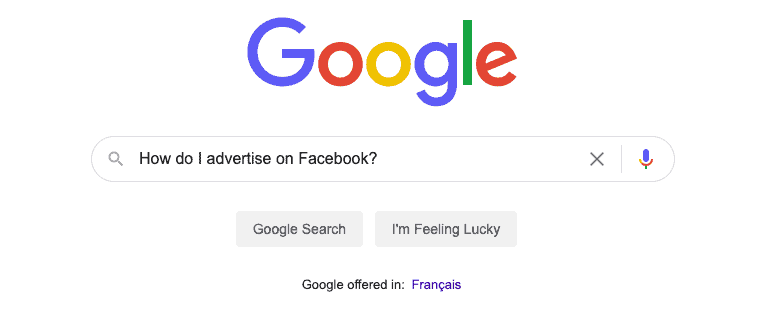Getting the green light to pull the trigger on your clinical trial is worth celebrating. After all, it can take months of back and forth before you receive the go-ahead and even longer to secure enough funding.
But after the excitement wears off, a new worry looms: Clinical trial marketing and participant recruitment.
Clinical trial marketing has changed a lot over the last decade.

With social media platforms like Facebook, Instagram, and YouTube along with online search tools like Google eating up advertising market share, patient recruitment advertising needs to keep pace.
Let’s take a deeper look into how successful research teams are using digital patient recruitment strategies to their advantage and meeting their study recruitment goals.
Table of Contents
The real deal about digital patient recruitment in the 21st century
Google “How do I advertise on Facebook?” and you’ll get back 1.47 billion results.
Once upon a time, newspapers, radio and television ruled the advertising world. The keys to successful advertising were relatively straightforward and consistent.

The average clinical trial could get away with recruiting patients through traditional means like patient databases and by posting flyers in high traffic areas. Likewise, studies with a budget could run a few newspaper ads, take out a page in a community newsletter or order some radio spots to make up for a recruitment shortfall.
These approaches to a clinical trial advertisement would bring in interested participants, though without any way to predict their eligibility or how consistently they’d show up.
Why traditional media isn’t as effective for clinical trial ads
The market share held by traditional media has continued to shrink over the last 10 years and in its place, digital marketing has taken over.

In 2020, spending on online advertising in the United States grew by 12.2% year-over-year despite the pandemic, hitting almost $356 billion dollars. Ad spending for traditional media, meanwhile, has been steadily falling since as early as 2012.
That’s a significant difference, and it’s estimated that spending on digital advertising will account for $645 billion advertising dollars by 2024.
It should come as no surprise why traditional advertising doesn’t work very well anymore.
Even before COVID-19 restrictions were in place in 2020, people weren’t engaging in the same old mediums anymore. Instead of watching local TV, we spend our time on Netflix, Apple TV, and YouTube.Instead of listening to the radio, we’re listening to podcasts, Spotify and other digital shows. Instead of reading newspapers, we’re now getting the news from our Facebook news feed, Twitter, Reddit or directly from news apps.
With so much change to digital information in such a quick period of time, it can be hard to keep up with what works and what doesn’t. It’s safe to say that digital advertising is here to stay and will continue to eat up market share.
Harnessing mobile technology and social media
When done correctly, digital advertising can outperform traditional media because of the reach of online platforms and audience targeting features they use.
Fuelled by the adoption of mobile technology like smarphones and tablet PCs, digital media is a regular part of the lives of billions of people around the world.
For example, Facebook boasts over two billion user accounts. (As of 2020 the global population sits at 7.8 billion people.) According to Pew Research, almost 70% of adults in the United States used Facebook in 2019. With a population of 328 million people, this means that close to 230 million Americans are connected to the social media giant.

Aside from the sheer volume of people accessing information online and through social media, these platforms have advanced demographic targeting features available to advertisers that no traditional media source can compete with.
The trick is to use these tools effectively and to understand what kind of information the computer algorithms must be fed in order to get your ad in front of the right people at the right time. Without the understanding of the back-end set up and the way that digital advertising works across each platform, you can easily spend your entire advertising budget and have nothing to show for it.

Factoring for age and disease type
Here’s some good (and maybe surprising) news: The 65+ demographic is the fastest growing group adopting digital technology. Older populations are on social media and many of them have smartphones This target demographic may not be who you immediately assume uses social media, but don’t count someone out because of their age.
In a nutshell, this means digital marketing can be just as effective for older demographics and unique populations because of the reach and advanced targeting features.In fact, these tools could make recruitment easier because of how specific you can design advertisements and the post-click experience for your target population.
In fact, these tools can make recruitment easier because of how specific you can design advertisements and the post-click experience for your target population.

Social media advertising can reach more than just your target audience. In addition to these individuals themselves, patient recruitment ads can be targeted towards partners, caregivers or friends of older individuals or unique populations, who then see the ad and respond on their behalf.
In some disease areas, especially those that can be incredibly isolating, the online world is a lifeline for these patients.
The key to successful recruitment is knowing what platforms and search tools these groups use, and optimizing your advertising to reach them.
Related: Does Social Media Make Sense for My Clinical Trial?
Digital marketing has made advertising more complex than ever.
While running an ad in a newspaper or putting together a radio spot is relatively straightforward, the sheer number of platforms, options, requirements and limitations of each digital marketing method has added a lot of additional complexity that’s often overlooked.
When you think about online advertising options it’s likely that Facebook, Google, and YouTube are the first that come to mind because of their proliferation of the online advertising space. But there are a lot of other options available to savvy marketers to get their message in front of the right audience.
These include platforms and services like Instagram (owned by Facebook), Twitter, Reddit, TikTok, Spotify, podcasts, banner ads and a host of others.
“Unless a particular researcher has an advertising and marketing background, they should be focusing on what they do best, and look at hiring an expert.”

Nick Karrasch
CEO, Trialfacts
Again, the important thing to remember is to consider where your target participants spend time. If you’re looking to recruit young, healthy individuals as part of a control group, TikTok may be a great place to advertise. However, if you’re looking for older adults who suffer from rheumatoid arthritis, it may not be.
Further complicating things are the specific, nuanced ways that advertisements must be written and designed in order to be effective. For example, image sizes and format requirements for each platform are different. Additionally, you’ll need to consider how your ad is presented – it’s placement and overall goal on the site – and follow the social company’s policies. All these factors impact how your ad will be viewed.
As nice as it would be, there isn’t a “one size fits all” approach that can be used across all platforms.
Related: Beginner’s Guide to Using Facebook Advertising for Patient Recruitment
The “Facebook Dilemma”: Understanding new privacy rules and “app tracking transparency”
Before the update even hit iPhone users’ systems, both Facebook and marketers alike were in an uproar about how the iOS 14.5 update would hinder their shared ability to reach target audiences in digital marketing campaigns if they were using an iPhone.
The belief (rightly so) was that when given the option to “opt out” of application tracking, consumers would do just that. It didn’t take long for the numbers to reflect Mark Zuckerberg’s worst fear: Just a few weeks after its release, only 5% of iPhone users opted to allow tracking on their devices.
And it’s not just Apple users – Google announced in mid-2021 that Android phones would also begin limiting some application tracking features. However, their changes will be less challenging for businesses.

As a researcher embarking on a new digital patient recruitment campaign, the implications are clear – you, like anyone else running ads across digital platforms, will have to contend with these new changes.
While it may seem like online clinical trial marketing is a lost cause, that’s far from the truth. In reality, your clinical trial advertisement will still reach the masses, though it make take a little more time to reach the right kind of participants that will fit your eligibility criteria.
At the end of the day, yes, this change in individual user privacy settings may slightly affect your recruitment campaign. However, your overall experience depends greatly on a number of factors, including how well-developed your ad is and whether it speaks to your target participant audience and what kind of campaign you choose to run.
All is not yet lost when it comes to privacy hurdles and digital trial recruitment.
The Ultimate Swipe File For Clinical Trial Recruitment Ads

→ Take a sneak peek at the top ads that are working for clinical trials
→ Discover the underlying marketing principles behind the best-performing clinical trial recruitment ads
→ Learn how to tailor your message for each platform
How do clinical trials advertise to recruit participants?
If the complexity behind designing and publishing online advertisements wasn’t enough for you to think about calling in the experts, it’s entirely possible that the next two points will be all you need. Digital patient recruitment comes with its own set of hurdles.
IRB/Ethics approval is needed for everything. Every. Single. Thing.
The need for IRB/Ethics approval won’t come as a surprise to anyone that’s been involved in a clinical trial before. But the scope and scale of necessary approvals for a digital marketing campaign is enormous.
Many researchers make the mistake of thinking they only need to make one or two ads and have these approved before running them on their platform of choice.
In reality, you must create hundreds of ads in order to test them effectively with online audiences.
Ad testing is a critical step in creating an effective clinical trial marketing campaign and your IRB/Ethics committee must approve every version of each ad – even if it’s a small change to your text.
To make things even more maddening, approval is also required for responses to comments that may be left behind on ads. If an ad generates a strong response with a lot of comments left by users, you’ll find yourself with your hands tied if you want to respond in real time.
What this looks like in reality is having several generic responses that are approved in advance. While it’s a helpful fix, it limits your ability to actively engage with participants in a meaningful way and can cause you a lot of frustration, as social media is supposed to foster discussion.

Platform advertising policy and requirement changes
In the digital marketing industry, it’s no secret that platform specific advertising policies and requirements change all the time. We also know that these specs can change on a whim and that they’re proprietary algorithms, exclusive to each platform that impact what is approved and what is effective.
No one, aside from the company that owns the platform, really knows what words, phrases, and images may be banned at any given time. Changes are often made without any advance notice, so an ad strategy that worked yesterday could suddenly be irrelevant today.
Without the expertise to know what information in your adis the source of a failed campaign, you might find yourself running in circles.

What you really need to think about to successfully recruit patients for your study
There are many things that go into a successful recruitment campaign that most researchers and trial sponsors don’t realize are important or consider until things aren’t going well.
Consider these 7 points as effective clinical trial marketing guidelines.
It’s about more than writing a great clinical trial ad.
What is trial advertising at its core? Writing an effective clinical trial ad is one of the easy and less time consuming parts of the process.
Instead, you should also be thinking about nuances of each platform, their advertising policies and back-end reporting setup along with audience targeting features, among a host of other factors.
Related: Creating Effective Social Media Posts for Clinical Trial Recruitment
For example, the entire post-click experience – where your ad takes people to after they click – plays an essential role in attracting and retaining qualified patient leads, and is often overlooked by researchers.

Creation of effective landing pages or websites can make or break you.
Consider your own experience when you click on an ad on social media. You expect to be redirected to a clear, consise webpage. But how do you feel when the opposite happens and you’re taken to a poorly functioning, outdated or unprofessional landing page?
You’re probably not very invested in looking at the rest of the page. It could be unclear text, bad stock images or other elements that immediately turn you off. In many of these cases, you’re likely to give up before even starting to scroll through the content.
Your potential participants are no different.
A good landing page for digital patient recruitmentneeds to strike a balance between being descriptive and detailed without getting bogged down in medical jargon. It also needs to be optimized for mobile browsing and consider the entire user experience.
Another thing to remember is that the people clicking on your ad and finding their way to your landing page don’t know you.
Effective landing pages shape the participant experience and set the tone for your study.

They have no context about your study or why it may be important to them. Without this clearly spelled out right away, they’re likely to leave the page.
It’s your job to talk about the potential benefits of participating without going overboard and staying within the principles of GCP and the content that has been approved by your IRB/Ethics committee.
Think of your landing page as a profile page on social media or a dating app. What you convey on your landing page is the first step in building trust and rapport with a potential participant and you don’t want to ruin your first impression.
Proper back-end set up is a key to success.
There are many back-end considerations that go into running a clinical trial marketing campaign. As a researcher, it’s not part of your day-to-day job and you don’t really need to know in the grand scheme of your work.

These include things like having the expertise to know how computer algorithms operate and the type of information they need to properly distribute your ad. It also includes having the proper reporting infrastructure in place to measure the cost per enrollment of each participant.
Sure, it might look nice to have 1,000 people “like” your ad on Facebook. But if none of them have signed up for your study, you really have nothing to show for your efforts (or your diminishing ad budget).
A lot of the measurements and data to which you have access – things like cost per click, cost per thousand impressions, click through rate, and cost per conversion – are relatively meaningless to clinical trial recruitment.
For example, there are many situations where an ad might have low engagement rates but is highly successful in converting potential recruits into enrolled participants.
What matters is cost per enrolled participant into your study and the rate of participants flowing through your funnel. Anything else is an interim measure which can help indicate how things are going, but they’re nowhere near as important.
Without ongoing measurement and review of your data, you’re flying blind and hoping that whatever you’re doing sticks.
Platform-specific advertising policies and requirements are hard to navigate.
You can be forgiven for thinking that if your advertisement has been approved by your IRB/Ethics committee that it will be approved by your chosen platform. However, this isn’t always the case.
The rules around word count, image size, banned or inappropriate language/terminology, and even how ads are reviewed prior to posting are also all fair game.
If you take a closer look at the screenshot below, you’ll see there are specific policies related to prohibited and restricted content, video ads, targeting, positioning, and the use of text in ad images.

Facebook, in particular, has pages of advertising policies to sift through. Without the background expertise to navigate this potential minefield, you’re likely to find yourself frustrated with lackluster results from your online advertising efforts.
You’ll also not understand why your ads are being rejected or underperforming.
Online prescreening can save you time and money.
As you’ve probably already seen with other parts of digital marketing and online patient recruitment, when something is done properly it can save you a lot of hassle…
…and online prescreening is no different.
Imagine the ease of having an interested patient immediately directed from your study landing page to an online prescreening survey. From here, their eligibility can be determined in as short as 5-10 minutes without your staff having to lift a finger.
Potential participants can complete screening from their desk or smartphone when it works for them. You can weed out ineligible patients and quickly move those who do qualify along your pipeline to the next step.

This has the potential to save you countless hours and dollars from your budget. With an eye to the patient experience from start to finish, a properly executed prescreening process can help set expectations for the rest of your enrollment process.
A well designed and executed screening process will let your participants know that they’re in good hands.
Ignoring the behind-the-scenes targeting of your advertisements will lead to recruitment failure.

Online digital advertising platforms will happily take your money and share your ad to the masses, but this is a surefire way to fail to meet your recruitment goals.
There is considerable expertise that goes into developing and executing a strategy that gets your ad in front of the right audience. Not only is demographic and socioeconomic data important, but also understanding the online habits of your ideal participant is essential. This can be anything from the type of websites they visit to the amount of time they spend on their mobile devices.
You can also think about their social media browsing habits and even specific likes and dislikes.
The more complete picture you can pull together of your ideal participant, the better designed your clinical trial marketing campaign can be.
Without giving the details extra thought or even consideration, you’re setting your campaign up for what is likely to be a disappointment.
Interpreting analytical data and campaign optimization is ongoing.
Digital marketing is driven by analytical data that can and should be used for constant and ongoing refinement of your campaign.
But there’s a catch.
What we see and equate with success are often referred to as “vanity metrics.” These are things like engagement – the number of likes, clicks, and shares – that a particular advertisement gets.
What most people don’t realize is that a post can get a lot of engagement, but it translates into few people actually following through with sign-up.
Focus on the metrics that matter, like the number of questionnaires passed.
The important numbers are related to actual conversions of interested patients into enrolled participants. It’s these data sets that need to be reviewed daily and used to adjust campaigns accordingly.

Unfortunately, with digital patient recruitment advertising, there is no “set it and forget it” strategy that’s going to get you the results you’re after.
If you fail to have the right reporting infrastructure in place that includes regular data review and reporting, you’re likely to be wasting your money.
There is a small chance that you could do the recruitment yourself and it might go well, it might not cost you too much, and it might all work out… What’s much more likely is that you’ll start recruitment and it won’t just immediately work and you won’t know what to do next.
There’s no doubt that clinical trial recruitment has become more complex than ever as digital marketing and social media platforms outpace and outperform traditional patient recruitment advertising methods.
However, with a little bit of advanced planning and knowing when to get external help from the experts, you can launch your study recruitment with relative ease.



